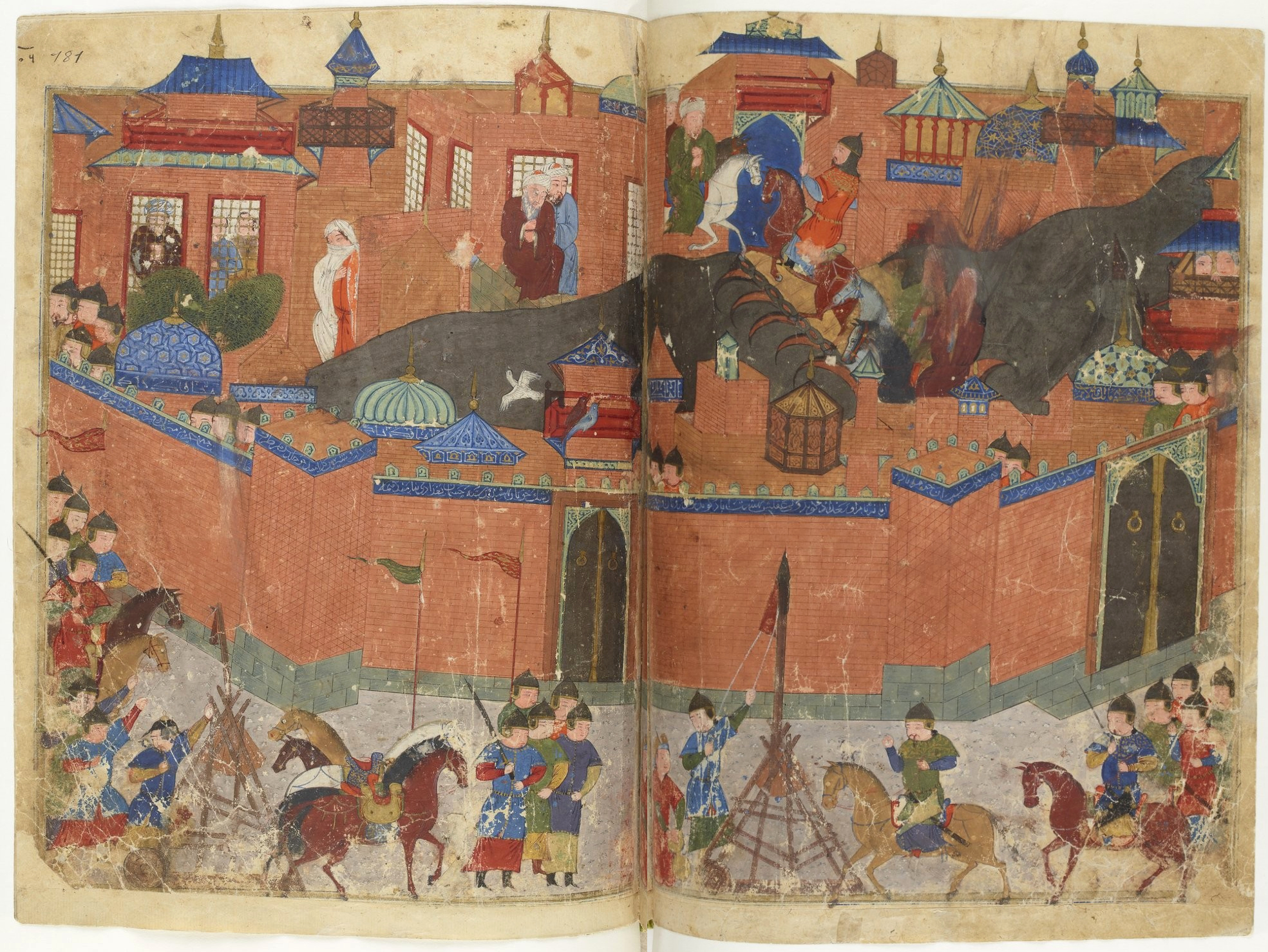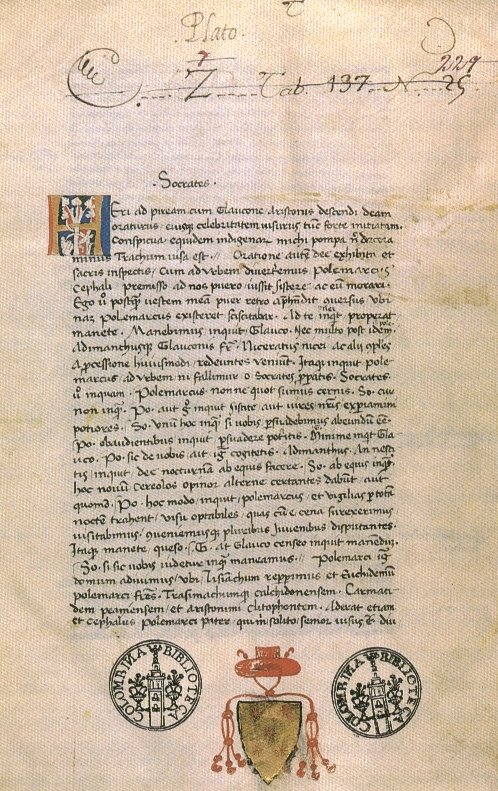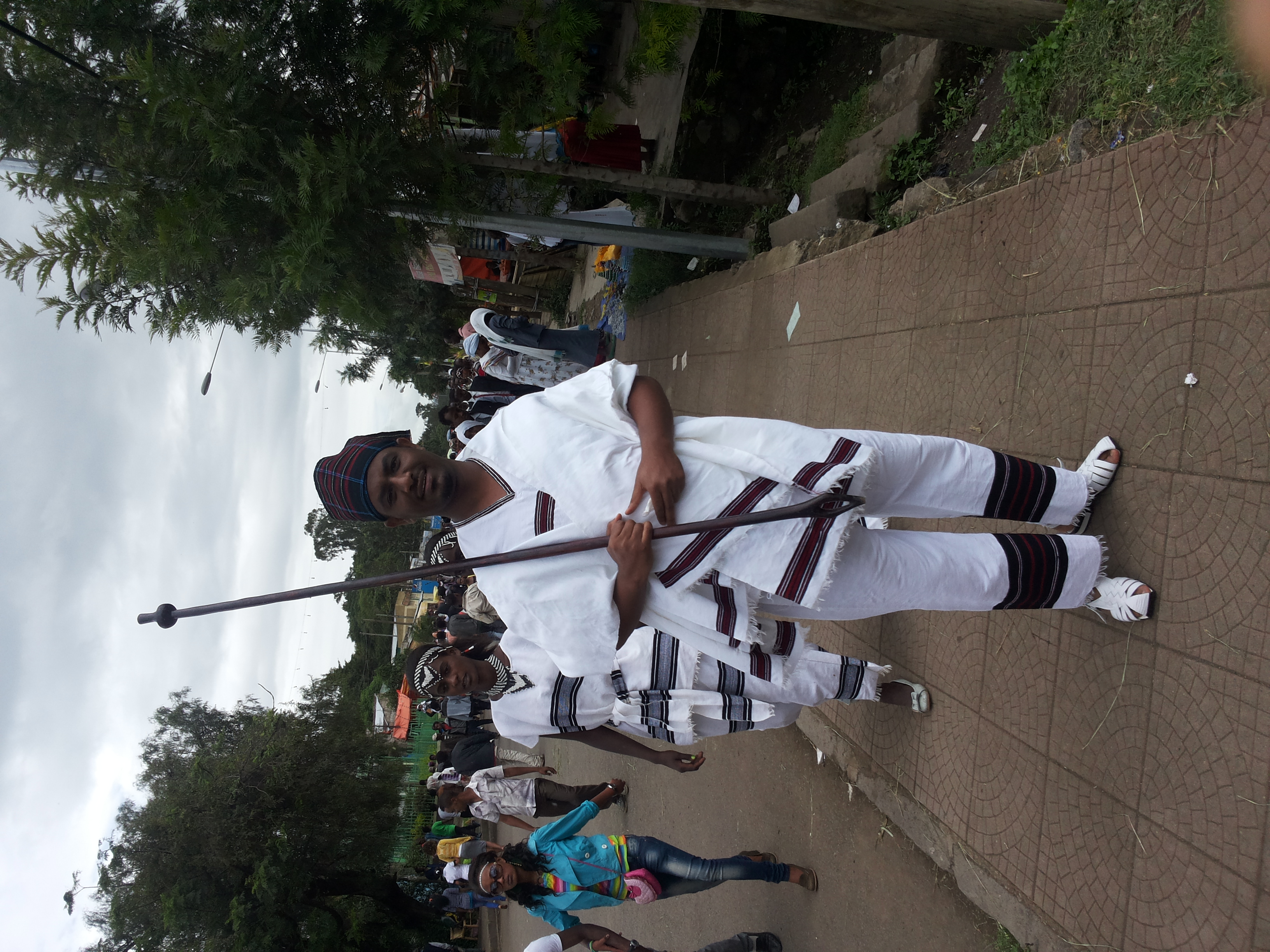|
Iranian Philosophy
Iranian philosophy ( Persian: فلسفه ایرانی) or Persian philosophy can be traced back as far as to Old Iranian philosophical traditions and thoughts which originated in ancient Indo-Iranian roots and were considerably influenced by Zarathustra's teachings. According to the Oxford Dictionary of Philosophy, the chronology of the subject and science of philosophy starts with the Indo-Iranians, dating this event to 1500 BC. The Oxford dictionary also states, "Zarathustra's philosophy entered to influence Western tradition through Judaism, and therefore on Middle Platonism." Throughout Iranian history and due to remarkable political and social changes such as the Arab and Mongol invasions of Persia, a wide spectrum of schools of thoughts showed a variety of views on philosophical questions extending from Old Iranian and mainly Zoroastrianism-related traditions, to schools appearing in the late pre-Islamic era such as Manicheism and Mazdakism as well as various post-Isla ... [...More Info...] [...Related Items...] OR: [Wikipedia] [Google] [Baidu] |
Persian Language
Persian ( ), also known by its endonym and exonym, endonym Farsi (, Fārsī ), is a Western Iranian languages, Western Iranian language belonging to the Iranian languages, Iranian branch of the Indo-Iranian languages, Indo-Iranian subdivision of the Indo-European languages. Persian is a pluricentric language predominantly spoken and used officially within Iran, Afghanistan, and Tajikistan in three mutual intelligibility, mutually intelligible standard language, standard varieties, respectively Iranian Persian (officially known as ''Persian''), Dari, Dari Persian (officially known as ''Dari'' since 1964), and Tajik language, Tajiki Persian (officially known as ''Tajik'' since 1999).Siddikzoda, S. "Tajik Language: Farsi or not Farsi?" in ''Media Insight Central Asia #27'', August 2002. It is also spoken natively in the Tajik variety by a significant population within Uzbekistan, as well as within other regions with a Persianate society, Persianate history in the cultural sphere o ... [...More Info...] [...Related Items...] OR: [Wikipedia] [Google] [Baidu] |
Illumination School
Illuminationism ( Persian حكمت اشراق ''hekmat-e eshrāq'', Arabic: حكمة الإشراق ''ḥikmat al-ishrāq'', both meaning "Wisdom of the Rising Light"), also known as ''Ishrāqiyyun'' or simply ''Ishrāqi'' ( Persian اشراق, Arabic: الإشراق, lit. "Rising", as in "Shining of the Rising Sun") is a philosophical and mystical school of thought introduced by Shahab al-Din Suhrawardi (honorific: ''Shaikh al-ʿIshraq'' or ''Shaikh-i-Ishraq'', both meaning "Master of Illumination") in the twelfth century, established with his ''Kitab Hikmat al-Ishraq'' (lit: "Book of the Wisdom of Illumination"), a fundamental text finished in 1186. Written with influence from Avicennism, Peripateticism, and Neoplatonism, the philosophy is nevertheless distinct as a novel and holistic addition to the history of Islamic philosophy. History While the Ilkhanate-Mongol Siege of Baghdad and the destruction of the House of Wisdom (Arabic: بيت الحكمة, romanized: Bayt al-Ḥi ... [...More Info...] [...Related Items...] OR: [Wikipedia] [Google] [Baidu] |
Myth Of Er
The Myth of Er (; , ''gen''.: ) is a legend that concludes Plato's ''Republic'' (10.614–10.621). The story includes an account of the cosmos and the afterlife that greatly influenced religious, philosophical, and scientific thought for many centuries. The story begins with a man named Er, son of Armenios (Ἀρμένιος), from Pamphylia, who dies in battle. When the bodies of those who died in the battle are collected, ten days after his death, Er remains undecomposed. Two days later he revives on his funeral-pyre and tells others of his journey in the afterlife, including an account of metempsychosis and the celestial spheres of the astral plane. The tale includes the idea that moral people are rewarded and immoral people punished after death. Although called the Myth of Er, the word "myth" here means "word, speech, account", rather than the modern meaning. The word is used at the end when Socrates explains that because Er did not drink the waters of Lethe, the account (' ... [...More Info...] [...Related Items...] OR: [Wikipedia] [Google] [Baidu] |
On Nature (Zoroaster)
''On Nature'' (Περὶ Φύσεως, ''Peri Physeos'') is the name of several works of ancient philosophy: * ''On Nature'' (Anaximander) * ''On Nature'' (Empedocles) * ''On Nature'' (Epicurus) * ''On Nature'' (Heraclitus) * ''On Nature'' (Melissus) * ''On Nature'' (Parmenides) * ''On Nature'' (Philolaus) * ''On Nature'' (Zeno) See also * Physis Physis (; ; pl. physeis, φύσεις) is a Greek philosophical, theological, and scientific term, usually translated into English—according to its Latin translation "natura"—as "nature". The term originated in ancient Greek philosophy, a ..., a Greek philosophical, theological, and scientific term, usually translated into English as 'nature' * Pseudo-Zeno {{disambig Hellenistic philosophical literature ... [...More Info...] [...Related Items...] OR: [Wikipedia] [Google] [Baidu] |
The Republic (Plato)
The ''Republic'' (; ) is a Socratic dialogue authored by Plato around 375 BC, concerning justice (), the order and character of the just city-state, and the just man. It is Plato's best-known work, and one of the world's most influential works of philosophy and political theory, both intellectually and historically. In the dialogue, Socrates discusses with various Athenians and foreigners the meaning of justice and whether the just man is happier than the unjust man.In ancient times, the book was alternately titled ''On Justice'' (not to be confused with the spurious dialogue of the same name). He considers the natures of existing regimes and then proposes a series of hypothetical cities in comparison, culminating in Kallipolis (), a utopian city-state ruled by a class of philosopher-kings. They also discuss ageing, love, theory of forms, the immortality of the soul, and the role of the philosopher and of poetry in society. The dialogue's setting seems to be the ... [...More Info...] [...Related Items...] OR: [Wikipedia] [Google] [Baidu] |
Colotes
Colotes of Lampsacus (, ''Kolōtēs Lampsakēnos''; c. 320 – after 268 BC) was a pupil of Epicurus. He wrote a work to prove "That it is impossible even to live according to the doctrines of the other philosophers" () and dedicated it to Ptolemy II Philadelphus, in all likelihood meant for the Library of Alexandria. Although this work is lost, its arguments are preserved in two works written by Plutarch in refutation of it: "That it is impossible even to live pleasantly according to Epicurus", and ''Against Colotes''. According to Plutarch, Colotes attacked Socrates and other great philosophers in this work. Some fragments of two other works of Colotes have been discovered at the Villa of the Papyri at Herculaneum: ''Against Plato's Lysis'', and ''Against Plato's Euthydemus''. According to Plutarch, Colotes, upon hearing Epicurus discourse on the nature of things, fell on his knees before him, and besought Epicurus to give him instruction. Plutarch claims that Colotes was a great ... [...More Info...] [...Related Items...] OR: [Wikipedia] [Google] [Baidu] |
Platonic Realism
The Theory of Forms or Theory of Ideas, also known as Platonic idealism or Platonic realism, is a philosophical theory credited to the Classical Greek philosopher Plato. A major concept in metaphysics, the theory suggests that the physical world is not as real or true as Forms. According to this theory, Forms—conventionally capitalized and also commonly translated as Ideas—are the timeless, absolute, non-physical, and unchangeable essences of all things, which objects and matter in the physical world merely participate in, imitate, or resemble. In other words, Forms are various abstract ideals that exist even outside of human minds and that constitute the basis of reality. Thus, Plato's Theory of Forms is a type of philosophical realism, asserting that certain ideas are literally real, and a type of idealism, asserting that reality is fundamentally composed of ideas, or abstract objects. Plato describes these entities only through the characters (primarily Socrates) in h ... [...More Info...] [...Related Items...] OR: [Wikipedia] [Google] [Baidu] |
Plato
Plato ( ; Greek language, Greek: , ; born BC, died 348/347 BC) was an ancient Greek philosopher of the Classical Greece, Classical period who is considered a foundational thinker in Western philosophy and an innovator of the written dialogue and dialectic forms. He influenced all the major areas of theoretical philosophy and practical philosophy, and was the founder of the Platonic Academy, a philosophical school in History of Athens, Athens where Plato taught the doctrines that would later become known as Platonism. Plato's most famous contribution is the theory of forms, theory of forms (or ideas), which aims to solve what is now known as the problem of universals. He was influenced by the pre-Socratic thinkers Pythagoras, Heraclitus, and Parmenides, although much of what is known about them is derived from Plato himself. Along with his teacher Socrates, and his student Aristotle, Plato is a central figure in the history of Western philosophy. Plato's complete ... [...More Info...] [...Related Items...] OR: [Wikipedia] [Google] [Baidu] |
History Of Western Philosophy
Western philosophy refers to the Philosophy, philosophical thought, traditions and works of the Western world. Historically, the term refers to the philosophical thinking of Western culture, beginning with the ancient Greek philosophy of the Pre-Socratic philosophy, pre-Socratics. The word ''philosophy'' itself originated from the Ancient Greek (φιλοσοφία), literally, "the love of wisdom" , "to love" and σοφία ''Sophia (wisdom), sophía'', "wisdom". History Ancient The scope of ancient Western philosophy included the problems of philosophy as they are understood today; but it also included many other disciplines, such as pure mathematics and natural sciences such as physics, astronomy, and biology (Aristotle, for example, wrote on all of these topics). Pre-Socratics The pre-Socratic philosophers were interested in cosmology (the nature and origin of the universe), while rejecting unargued fables in place for argued theory, i.e., dogma superseded reason, ... [...More Info...] [...Related Items...] OR: [Wikipedia] [Google] [Baidu] |
Monotheism
Monotheism is the belief that one God is the only, or at least the dominant deity.F. L. Cross, Cross, F.L.; Livingstone, E.A., eds. (1974). "Monotheism". The Oxford Dictionary of the Christian Church (2 ed.). Oxford: Oxford University Press. A distinction may be made between exclusive monotheism, in which the one God is a singular existence, and both inclusive and pluriform monotheism, in which multiple gods or godly forms are recognized, but each are postulated as extensions of the same God. Monotheism is distinguished from henotheism, a religious system in which the believer worships one god without denying that others may worship different gods with equal validity, and monolatry, monolatrism, the recognition of the existence of many gods but with the consistent worship of only one deity. The term ''monolatry'' was perhaps first used by Julius Wellhausen. Monotheism characterizes the traditions of Abrahamic religions, Abrahamic religions such as Judaism, Samaritanism, Christi ... [...More Info...] [...Related Items...] OR: [Wikipedia] [Google] [Baidu] |
Iranian Peoples
Iranian peoples, or Iranic peoples, are the collective ethnolinguistic groups who are identified chiefly by their native usage of any of the Iranian languages, which are a branch of the Indo-Iranian languages within the Indo-European languages, Indo-European language family. The Proto-Iranian language, Proto-Iranians are believed to have emerged as a separate branch of the Indo-Iranians in Central Asia around the mid-2nd millennium BC. At their peak of expansion in the mid-1st millennium BC, the territory of the Iranian peoples stretched across the entire Eurasian Steppe; from the Danube, Danubian Plains in the west to the Ordos Plateau in the east and the Iranian Plateau in the south.: "From the first millennium b.c., we have abundant historical, archaeological and linguistic sources for the location of the territory inhabited by the Iranian peoples. In this period the territory of the northern Iranians, they being equestrian nomads, extended over the whole zone of the ste ... [...More Info...] [...Related Items...] OR: [Wikipedia] [Google] [Baidu] |
Persia
Iran, officially the Islamic Republic of Iran (IRI) and also known as Persia, is a country in West Asia. It borders Iraq to the west, Turkey, Azerbaijan, and Armenia to the northwest, the Caspian Sea to the north, Turkmenistan to the northeast, Afghanistan to the east, Pakistan to the southeast, and the Gulf of Oman and the Persian Gulf to the south. With a Ethnicities in Iran, multi-ethnic population of over 92 million in an area of , Iran ranks 17th globally in both List of countries and dependencies by area, geographic size and List of countries and dependencies by population, population. It is the List of Asian countries by area, sixth-largest country entirely in Asia and one of the world's List of mountains in Iran, most mountainous countries. Officially an Islamic republic, Iran is divided into Regions of Iran, five regions with Provinces of Iran, 31 provinces. Tehran is the nation's Capital city, capital, List of cities in Iran by province, largest city and financial ... [...More Info...] [...Related Items...] OR: [Wikipedia] [Google] [Baidu] |






